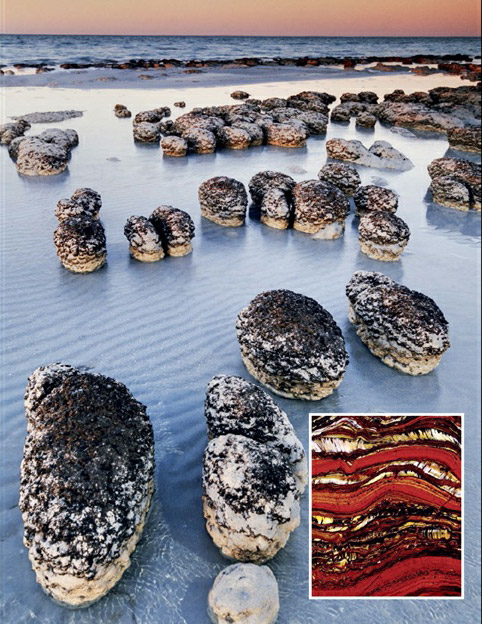Stromatolites, the oldest known fossils of microbial life on Earth, date back to about 3.7 billion years ago. These structures are composed of layers of rock and minerals formed by the collective efforts of simple single-celled organisms, especially cyanobacteria (formerly known as blue-green algae).
The formation process of stromatolites, though still under active research, generally involves coordinated groups of microorganisms creating microbial mats. These mats entrap sedimentary grains, typically in shallow-water environments, and eventually cement them together. Stromatolites formed by photosynthetic organisms tend to grow towards shallower water and brighter sunlight. The resulting structures’ shapes and sizes, including layers, domes, cones, branches, and columns, vary with environmental conditions such as temperature, tidal cycles, and sea-level changes.
For a significant period, from around 3.7 billion years ago to the Cambrian Explosion about 550 million years ago, stromatolites were one of the most abundant life forms on Earth. Photosynthetic cyanobacteria in these stromatolites contributed to a considerable increase in atmospheric oxygen during the Archean and early Proterozoic eons. However, the advent of predatory shallow-water grazers during the Cambrian period led to a decline in stromatolite populations.
While finding actual fossilized microbes within ancient stromatolites is rare, leading to some debate over their biological origins, similarities between ancient fossilized structures and modern living stromatolites provide strong evidence of a biological origin for these ancient deposits. Today, stromatolites still form in places like Shark Bay in Western Australia and the shores of the Great Salt Lake in Utah. Their persistence makes them among the oldest living life forms on Earth, offering a unique glimpse into the early stages of life and atmospheric evolution.

